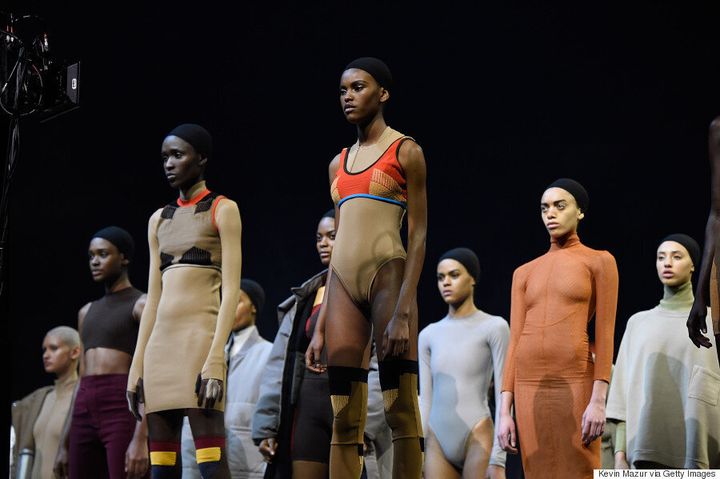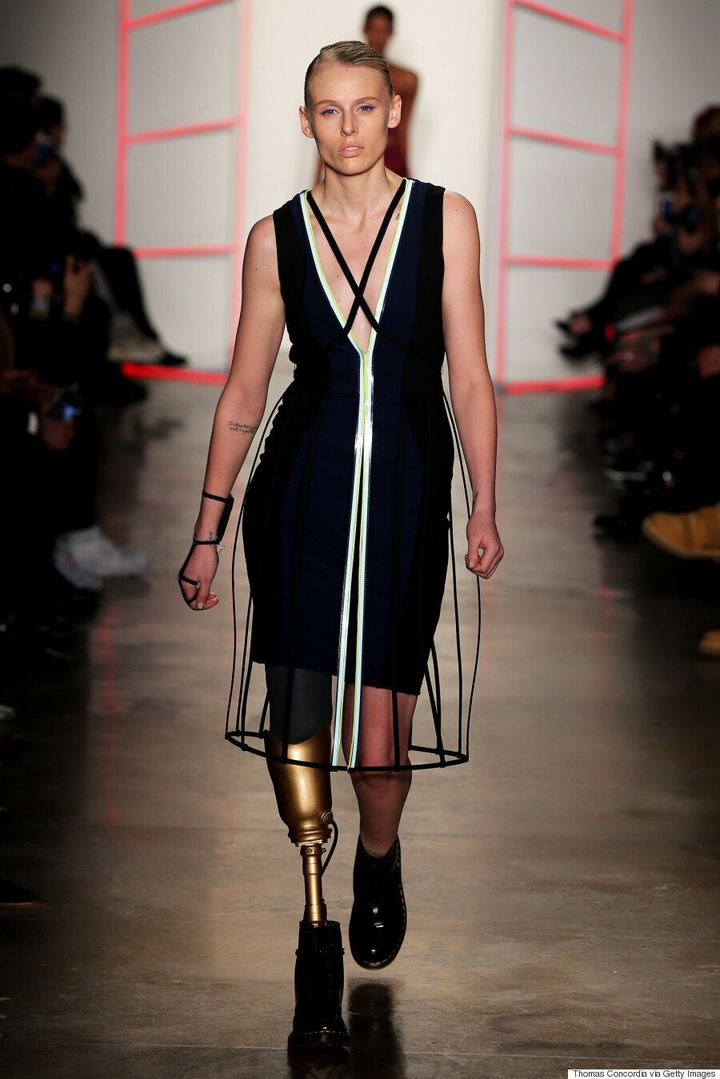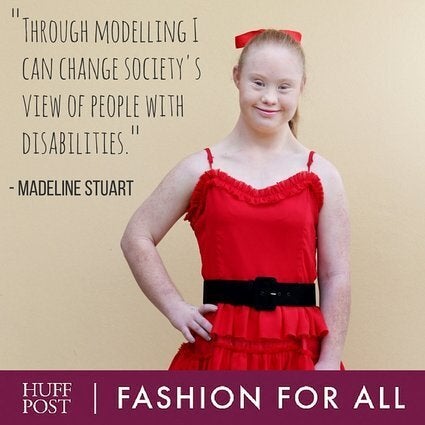If the most recent Fashion Weeks have taught us anything, it’s that the question of diversity is one the fashion industry is having trouble answering.
Spring 2016 shows saw only 797 of 3875 bookings go to women of colour, compared to 32 per cent of models of colour seen walking in last month’s fall 2016 shows. And this is frustrating because our inability to diversify the business is old news — especially since some people on the inside have seemed so consistently unwilling.

Balenciaga's fall/winter 2016 fashion show.
In a recent interview with Teen Vogue, Naomi Campbell spoke out about her own experiences with stylists who were ill-equipped to work with women of colour — and hers were similar to the testimonies of Jourdan Dunn, Nykhor Paul, and Leomie Anderson, who’ve talked about experiencing the same thing.
"When I was younger, I encountered this same issue," Campbell told Teen Vogue. "I would be backstage at shows and there would be stylists who didn’t have any experience working with black models. It’s disappointing to hear that models of colour are still encountering these same issues all these years later."
And in that same piece, activist Bethann Hardison hit the nail on the head: "If you don’t have models of colour [being booked for a show], there’s no point in practice."
Admittedly, there’s been glimmers of hope: model Kayla Scott has sung the praises of diversity’s raised profile in general, as well as how awesome it was to see an almost all-black cast in Yeezy Season 3.

Models at Yeezy Season 3.
Plus, the industries have been (slowly) diversifying in different ways: trans model Laith Ashley took New York Fashion Week by storm, H&M Studio recently welcomed both trans model Andreja Pejic and curvy model Ashley Graham, and Chromat featured model Lauren Wasser, who walked with a prosthetic leg. Which is awesome — but it isn’t enough.

Lauren Wasser made her runway debut at Chromat's show during New York City Fashion Week.
The thing is, it’s super easy to write and to talk about diversity, but then to throw up our hands while saying "do better" without creating any demand for it or offering any solutions. The progress we’ve seen in recent seasons has been cool, yes, but the fact that it’s still news — the fact that it’s a huge deal to see a transgender model on the runway or to see a fashion show populated by mostly models of colour — only points to the fact that diversity is still a novelty.
And as long as diversity is a novelty, it’s not a way of life. And that’s a huge problem. It still sends the message that if you’re not a white, cis, skinny, and abled person, you’re "other." But an industry based on individuality and self-expression should be exactly where we obliterate these types of norms — it should be a space where individuality is championed and where it is celebrated and where anyone who has issues with it are asked to educate themselves (or to please leave).

Ashley Graham walks the runway at H&M Studio AW 2016 show in Paris.
And it’s up to us, as consumers of fashion, to raise the bar by demanding more. It’s easy to get away with something if you’re not being questioned, so it’s our job to question the industry and to question loudly. It’s important to ask why all models look the same. It’s important to boycott a brand if you feel they’re ignoring diversity for the sake of a damaging mandate. And it’s important to champion the work of models who’ve created space for even younger, burgeoning models who are looking to break into an industry famous for keeping doors closed.
We’ve learned that being loud heeds results, and without raising hell, we become complacent. It’s easy to sit and complain because a task seems daunting, but in the case of diversity in fashion, the task is not: instead, it’s telling an industry whose very survival relies on our approval that we’re unhappy with the way it’s doing business. And if we’re unhappy, the business itself should be. It should be straight-up scared. (Mainly since our unhappiness means that we might give them our money anymore.)
So while we may celebrate the slow progress of fashion’s relationship with diversity, we can still ask for more. In terms of ushering in more types of models who hail from all backgrounds, there’s no such thing as being too greedy — we should want to see everybody, and we should be vocal about it. And true, we may not all have a designer’s ear, but we do all have a platform built on 140 characters (or any other platforms you may have — I don’t know you guys), and through those things we can usher in change. There is space for every person in fashion. So let’s remind fashion of that, constantly.
Also on HuffPost
